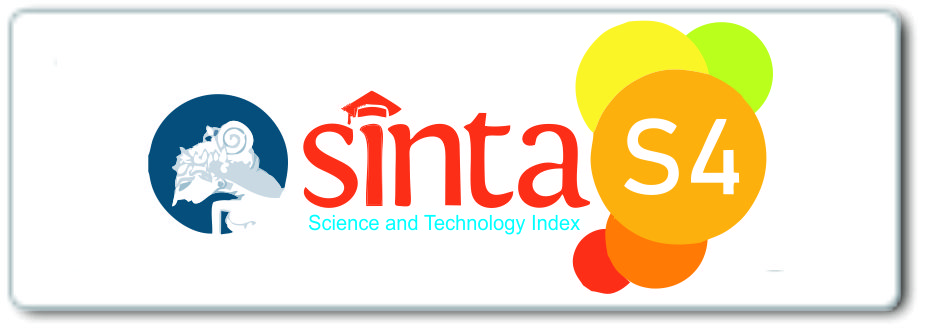Interaksi Pendengar dan Promosi Program Siaran Radio “Polemik Trijaya†di Twitter
DOI:
https://doi.org/10.29240/jdk.v6i2.3757Keywords:
Twitter, Promotion, Listener's Interaction, Broadcasting ProgramAbstract
The radio listener's comments and questions in weekend talk show broadcasting program entitled “Polemik Trijaya†were delivered via Twitter, which is also used to promote the program. This methodological study was determined to describe the broadcasting program's interaction and promotion in Twitter by studying the phenomenon in this research. The data was collected with interview, observation, and documentation techniques to be analyzed and concluded later on. It was found that the interactions used retweet and hashtag features, in which the hashtags used were specifically meant for the program topic which allows the interactions to continue even if the broadcasting program is ended. Twitter itself is an effective media to promote the “Polemik Trijaya†due to the promotional content that can be repackaged to be more interactive, the interactions are included in promotional content that can attract the interest of advertisers as a contributive element to the operational continuity of MNC Trijaya.
Downloads
References
Clinten, Bill. “Pengguna Aktif Harian Twitter Indonesia Diklaim Terbanyak.†Last modified 2019. Accessed November 11, 2020. https://tekno.kompas.com/read/2019/10/30/16062477/pengguna-aktif-harian-twitter-indonesia-diklaim-terbanyak.
Databoks. “Indonesia Pengguna Twitter Terbesar Ketiga Di Dunia.†Last modified 2016. Accessed November 20, 2021. https://databoks.katadata.co.id/datapublish/2016/11/22/indonesia-pengguna-twitter-terbesar-ketiga-di-dunia.
Dewi, Rosanti Utami, and Zam Zam Nurjaman. “Penggunaan Jejaring Sosial Twitter Sebagai Media Promosi Pada Restoran Ranjang 69.†Commed : Jurnal Komunikasi dan Media 1, no. 2 (2017). http://ejournal.upbatam.ac.id/index.php/commed/article/view/155.
Eddyono, Aryo Subarkah. “Twitter: Kawan, Sekaligus Lawan Bagi Redaksi Berita.†Journal Communication Spectrum 3, no. 1 (2013): 47–65. http://journal.bakrie.ac.id/index.php/Journal_Communication_spectrum/article/view/766/617.
Herdiansyah, Haris. Metodologi Penelitian Kualitatif Untuk Ilmu-Ilmu Sosial. Jakarta: Salemba Humanika, 2014.
Hermawan, Agus. Komunikasi Pemasaran. Jakarta: Erlangga, 2012.
Inphedia.id. “Media Sosial Dan Online Ini Yang Bisa Digunakan Untuk Promosi Bisnis.†Last modified 2019. Accessed October 14, 2021. https://www.inphedia.id/2019/06/media-sosial-dan-online-ini-yang-banyak.html.
Iryanti, Yasmin Salsabila, and Margareta Aulia Rachman. “Promosi Perpustakaan Melalui Media Sosial Twitter Di Perpustakaan Hukum Daniel S. Lev.†Edulib: Journal of Library and Information Science 9, no. 2 (2019). https://ejournal.upi.edu/index.php/edulib/article/view/17763/pdf.
Ishaq, Ropingi el, and Prima Ayu Rizqi Mahanani. “Media Sosial, Ruang Publik, Dan Budaya ‘Pop.’†Ettisal 3, no. 1 (2018): 15–27. https://ejournal.unida.gontor.ac.id/index.php/ettisal/article/view/1928/pdf_13.
Jati, Anggoro Suryo. “Jumlah Pengguna Twitter Meningkat, Tapi...†Last modified 2020. Accessed November 11, 2020. https://inet.detik.com/cyberlife/d-5001786/jumlah-pengguna-twitter-meningkat-tapi.
Kotler, Philip, and Kevin Lane Keller. Manajemen Pemasaran. 12th ed. Jakarta: Indeks, 2007.
MNC Radio Networks. “MNC Trijaya FM.†Accessed November 3, 2021. http://mncnetworks.com/index.php/radio-stations/detail/3/mnc-trijaya-fm.
———. “We Are Indonesia’s Largest Radio Networks.†Accessed November 5, 2016. http://mncnetworks.com/.
Morissan. Manajemen Media Penyiaran: Strategi Mengelola Radio & Televisi. Jakarta: Kencana, 2013.
Nurkholisoh. “Media Baru (New Media) Sebagai Sarana Komunikasi Pemasaran Yang Efektif.†Wacana: Jurnal Ilmiah Ilmu Komunikasi 14, no. 2 (2015). http://journal.moestopo.ac.id/index.php/wacana/article/view/98.
Redcomm. “Kelebihan Dan Kekurangan Penggunaan Twitter Sebagai Media Promosi.†Accessed October 14, 2021. https://redcomm.co.id/knowledges/kelebihan-dan-kekurangan-penggunaan-twitter-sebagai-media-promosi.
Sanjaya, Marta, and Gita Ramadhani. “Pengaruh Social Media Twitter Sebagai Alat Promosi Terhadap Loyalitas Pelanggan (Studi Kasus Fred Perry Plaza Indonesia Periode Februari – April 2013).†Lontar: Jurnal Ilmu Komunikasi 2, no. 3 (2014). https://e-jurnal.lppmunsera.org/index.php/LONTAR/article/view/340.
Suryani, Ita, Liliyana, Muhammad Handar, and Ratnasari Ekasuci. “Pemanfaatan Media Sosial Sebagai Media Promosi Bagi Radio Mersi 93.9 FM.†Jurnal Komunikasi 11, no. 1 (2020): 67–76.
Taecharungroj, Viriya. “Starbucks’ Marketing Communications Strategy on Twitter.†Journal of Marketing Communications 23, no. 6 (2017): 552–571.
Tjiptono, Fandy. Strategi Pemasaran. 4th ed. Yogyakarta: Andi, 2015.
Weaver, Jason. Manager’s Guide to Online Marketing. Madison: McGraw-Hill, 2013.
Wulandari, Yunizar Sri, and Anna Fatchiya. “Efektivitas Promosi Melalui Twitter Pada Perusahaan Pariwisata Bahari ‘Ibu Penyu.’†Jurnal Sains Komunikasi dan Pengembangan Masyarakat 1, no. 2 (2017). http://ejournal.skpm.ipb.ac.id/index.php/jskpm/article/view/108.
Downloads
Published
Issue
Section
License
Authors who publish with Jurnal Dakwah dan Komunikasi agree to the following terms:- Authors retain copyright and grant the journal right of first publication with the work simultaneously licensed under a Creative Commons Attribution-NonCommercial-ShareAlike 4.0 International License (CC BY-NC-SA 4.0) that allows others to share the work with an acknowledgment of the work's authorship and initial publication in this journal.
- Authors are able to enter into separate, additional contractual arrangements for the non-exclusive distribution of the journal's published version of the work (e.g., post it to an institutional repository or publish it in a book), with an acknowledgment of its initial publication in this journal.
- Authors are permitted and encouraged to post their work online (e.g., in institutional repositories or on their website) prior to and during the submission process, as it can lead to productive exchanges, as well as earlier and greater citation of published work (See The Effect of Open Access).

